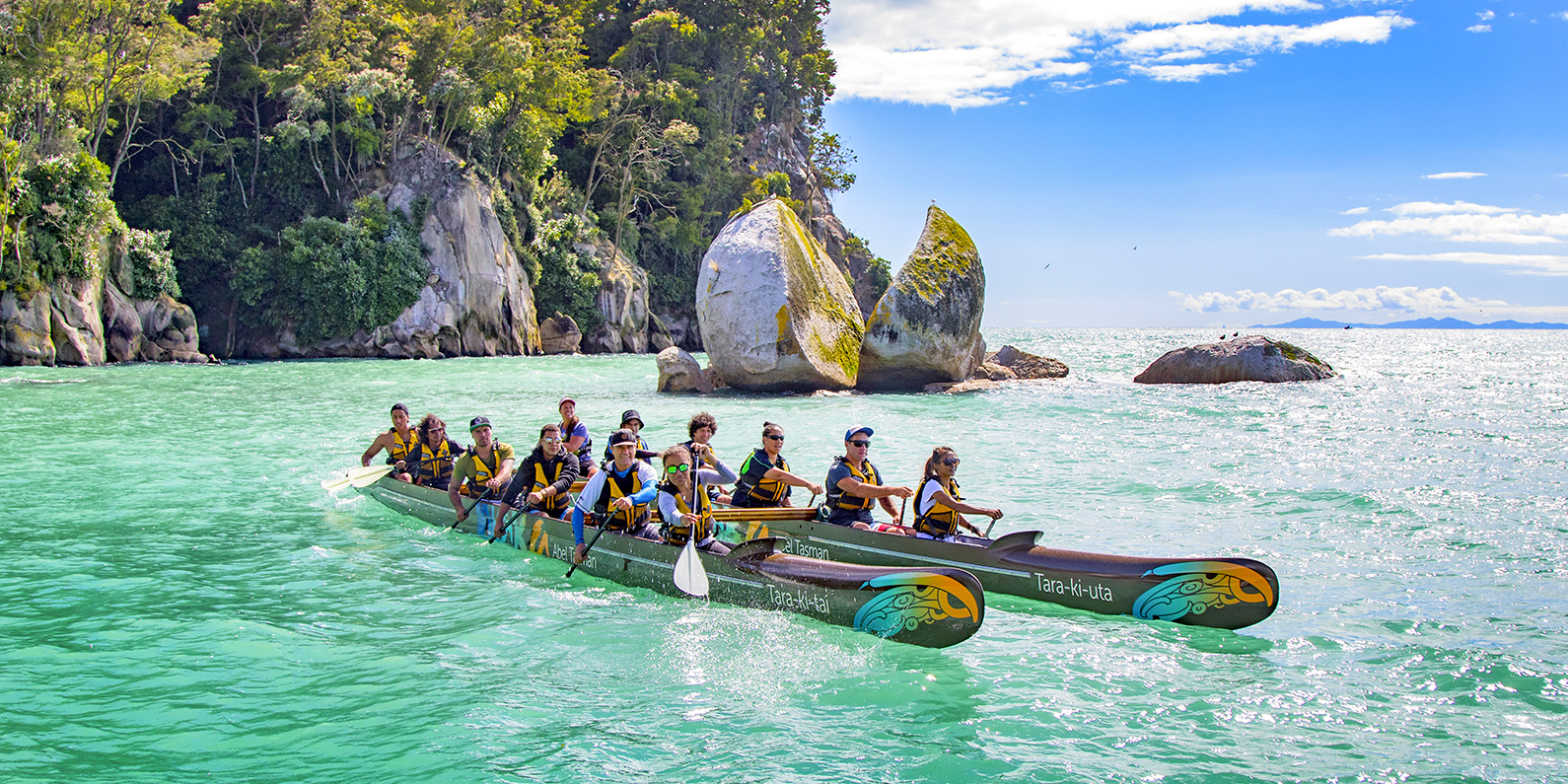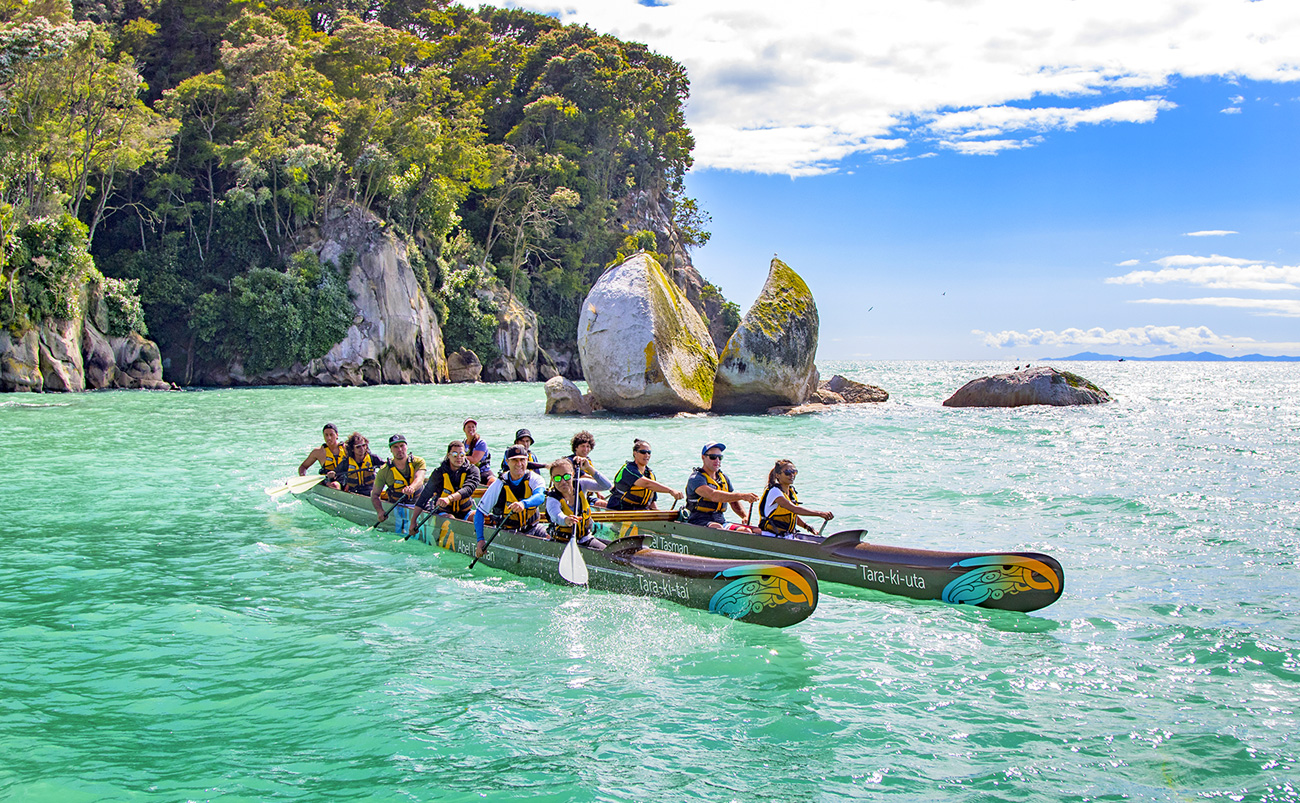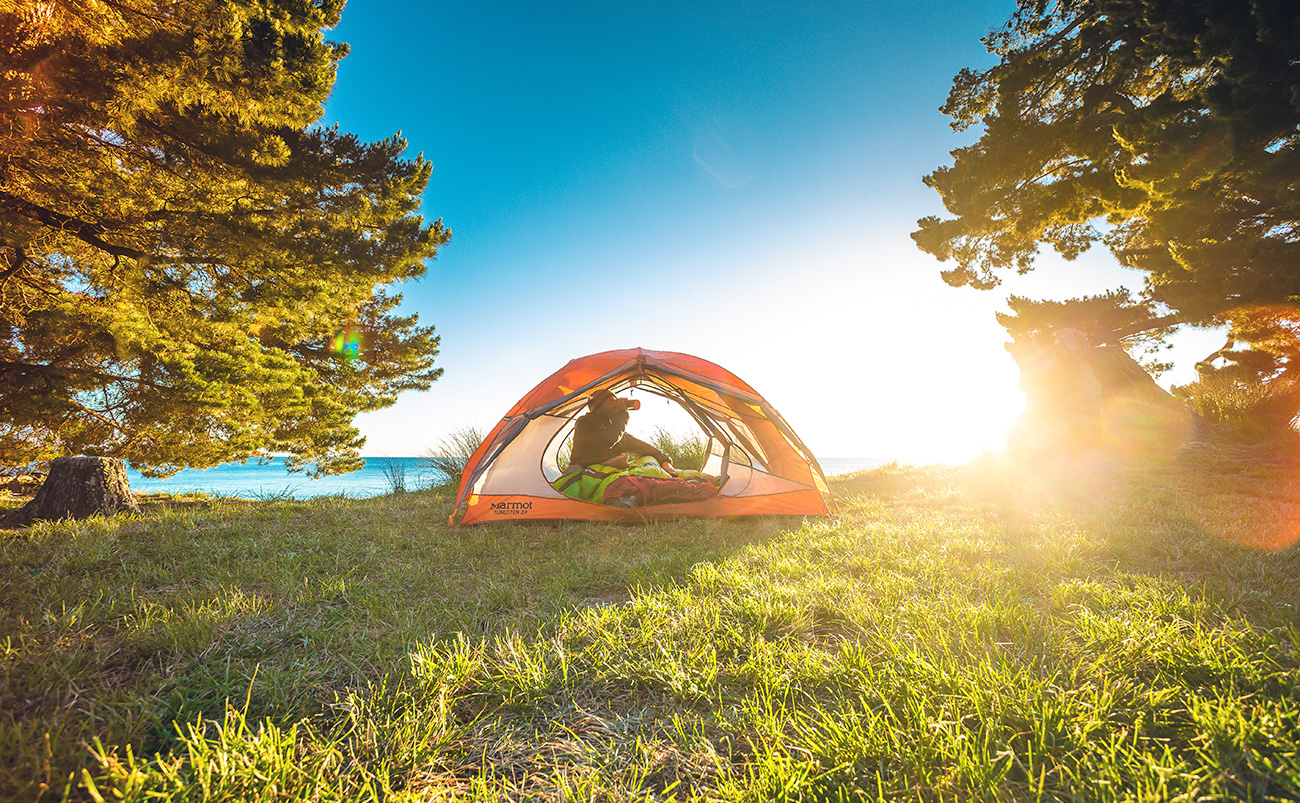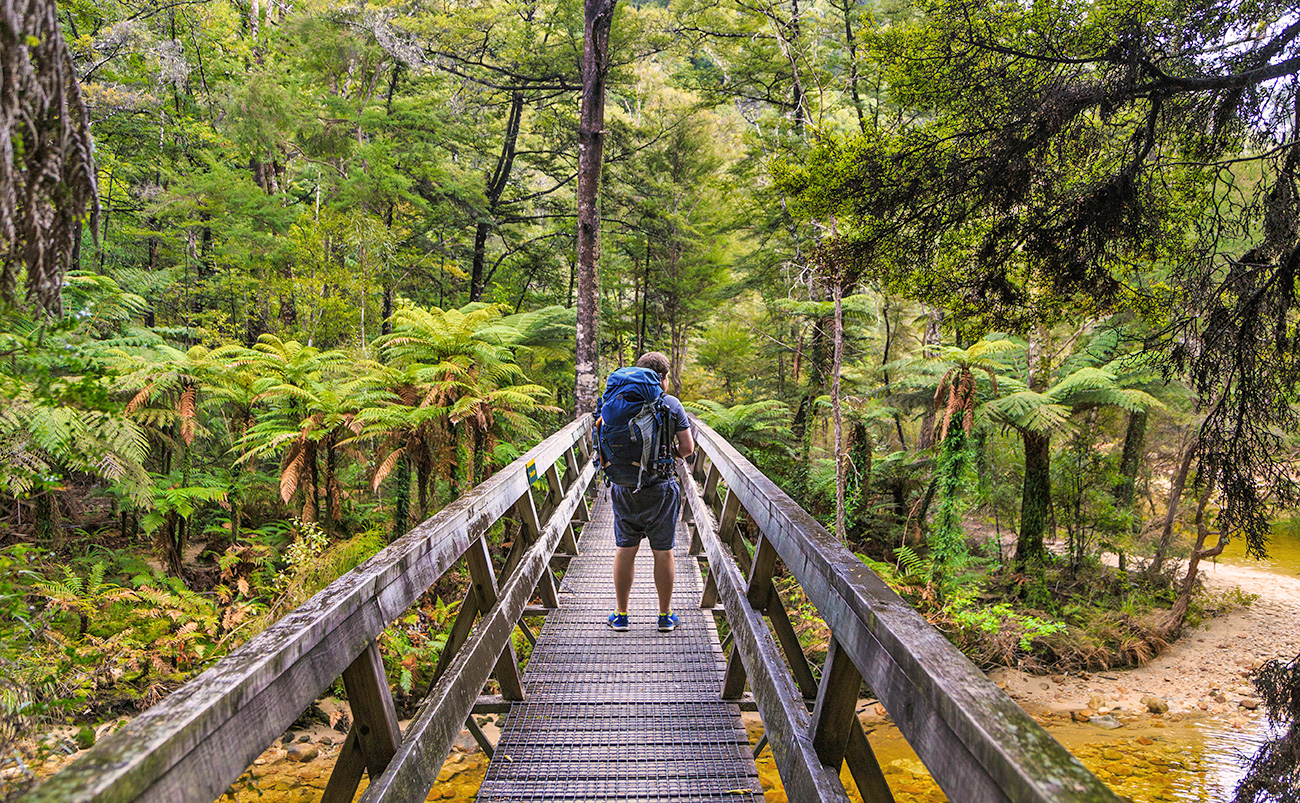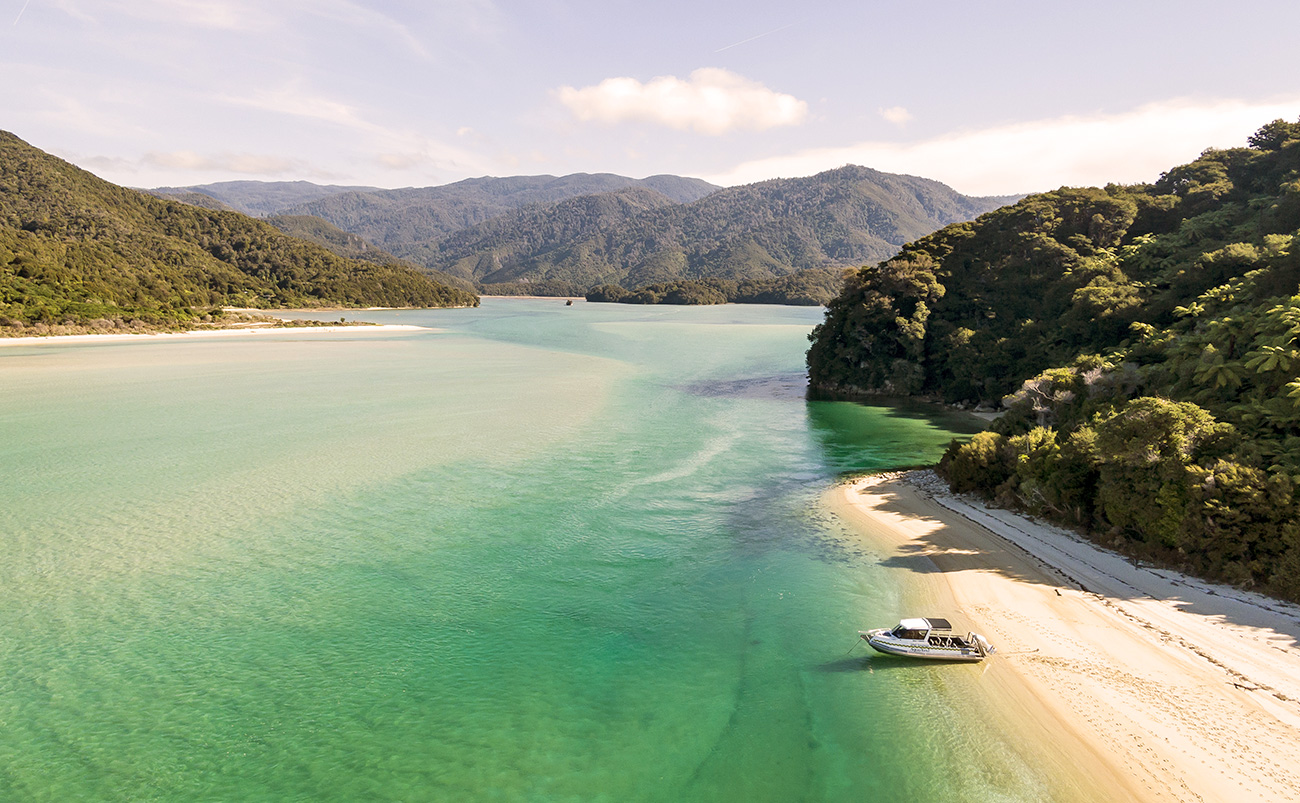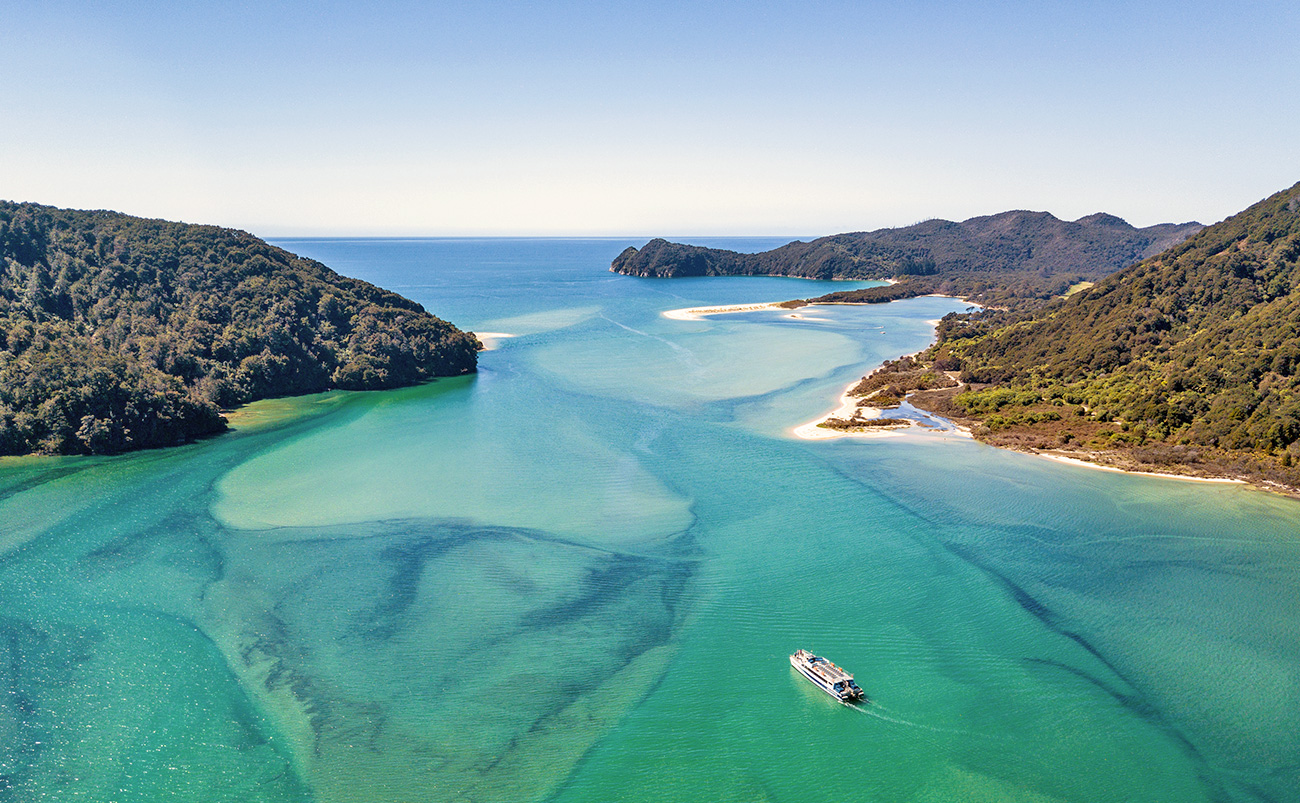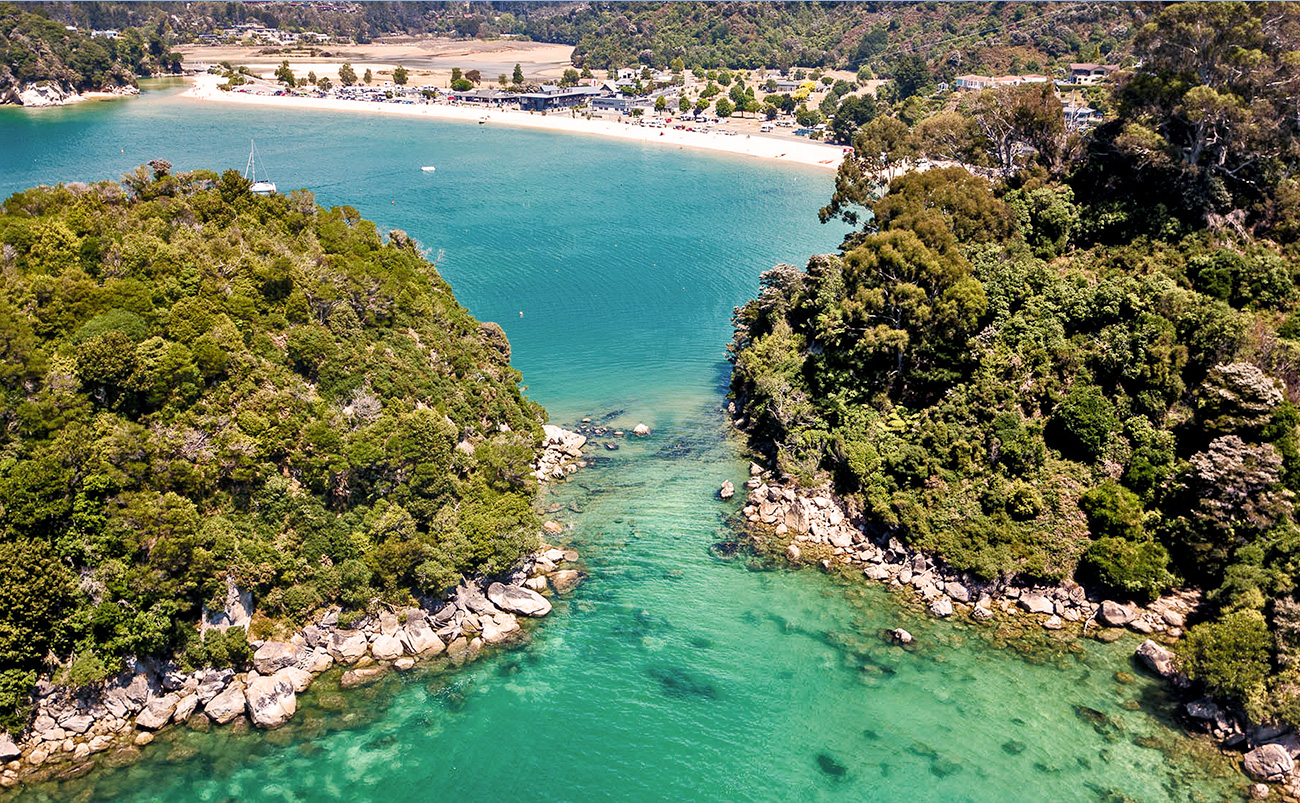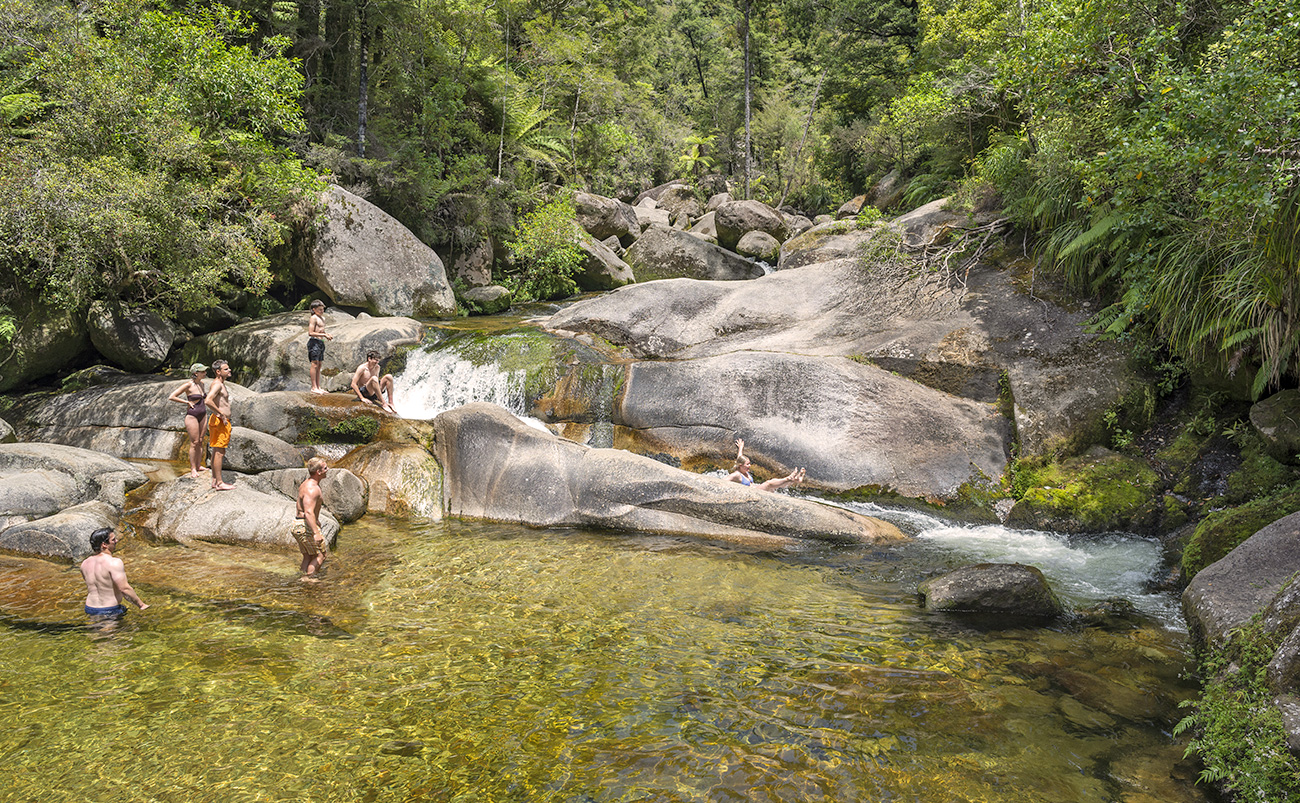Visitors love the way the Abel Tasman National Park mixes physical exertion with beach life. Bursts of hiking or kayaking are punctuated by sun bathing, swimming and sedate snorkelling around the characteristic granite outcrops. Those who crave home comforts can stay in luxurious lodges, but sleeping under the stars is regarded as the ultimate way to experience the spirit of the Abel Tasman.
Table of Contents
Highlights
The strip of coast that falls within the boundaries of the park is highly distinctive. Granite and marble formations fringe the headlands, which are cloaked in regenerating native forest. Inviting sandy beaches fill the spaces between trees and tide line. Crystal clear streams tumble down mossy valleys to join the ocean.
At Te Pukatea Bay, a perfect crescent of golden sand, a walking track leads up Pitt Head to an ancient Maori pa (fort) site. Terracing and food pits are still visible, and it’s easy to see why the location was chosen as a defensive site – the views are huge.
Native wildlife is an essential part of the scenery. Tui and bellbird song fills the forest; shags (cormorants), gannets and little blue penguins dive for their dinner; fur seals lounge on the rocks around the edge of Tonga Island.
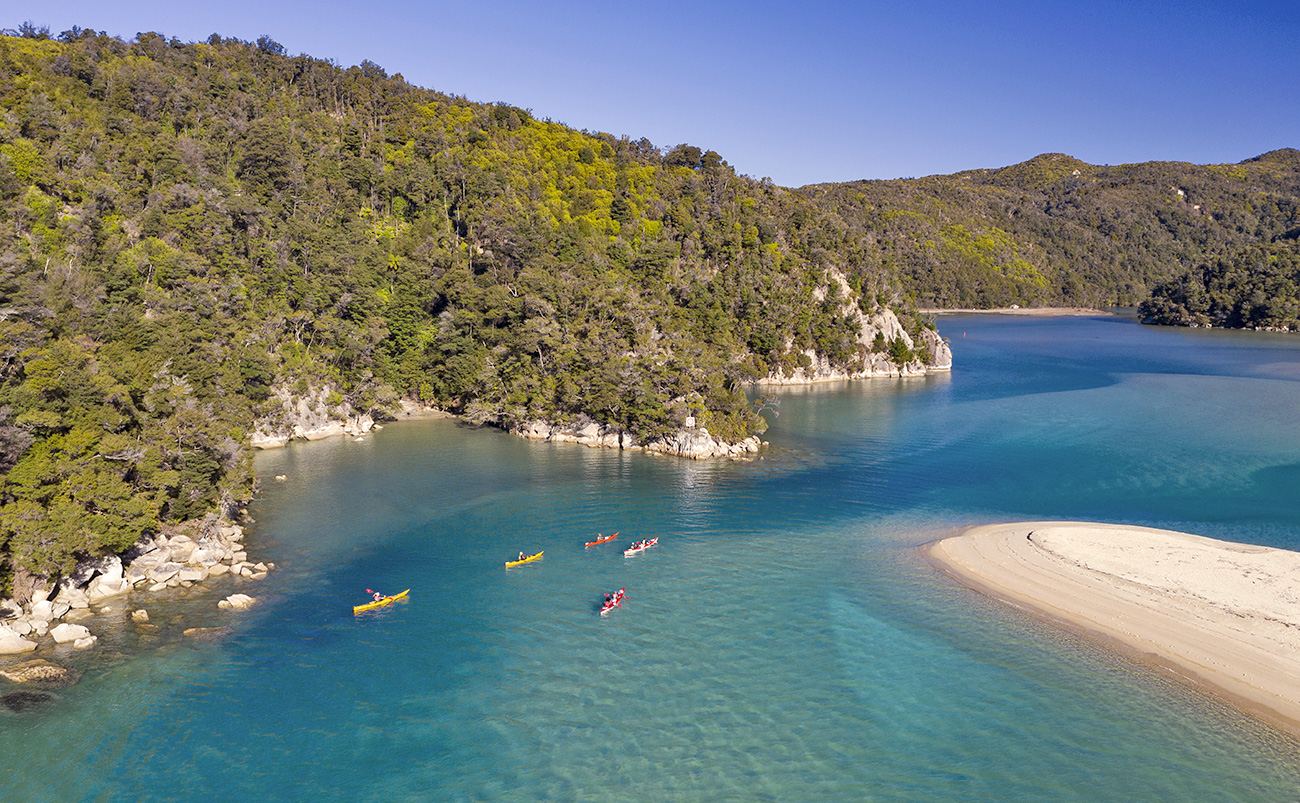
Where to Stay
In the National Park
There are comfortable private lodges at The Anchorage, Awaroa and Torrent Bay. The Department of Conservation provides four ‘Great Walk’ hikers’ huts along the Coastal Track and four standard huts on the inland tracks. These huts have mattresses, water and toilets – some have cooking facilities. Campsites with water, toilets and fireplaces are also available within the park. Bookings are required in peak season.
Around the Park
Various types of accommodation can be found at the settlements of Marahau and Kaiteriteri at the southern end of the park, and Totaranui at the northern end.
Things to Do
The Coastal Track and other Walks
Classed as one of New Zealand’s ‘Great Walks’, the Abel Tasman’s Coastal Track takes between 3 and 5 days to complete. It climbs around headlands and through native forest to a series of beautiful beaches. The track is walkable at any time of the year. Expect to see lots of other walkers and day visitors in summer. For a different view of the park, there are inland tracks that lead up to the dramatic karst landscape of Takaka Hill.
Sea Kayaking
A number of kayaking companies run guided tours from Marahau and Kaiteriteri. If you’d rather be independent, you can rent kayaks and stay at campsites, huts or lodges within the park – just as you would if you were hiking.
Day Trips
For those with only a day to see the park, water taxi companies can provide a personalised mix of sightseeing by boat and track walking. Pre-booking is advised. Enquire at Motueka, Marahau or Kaiteriteri.
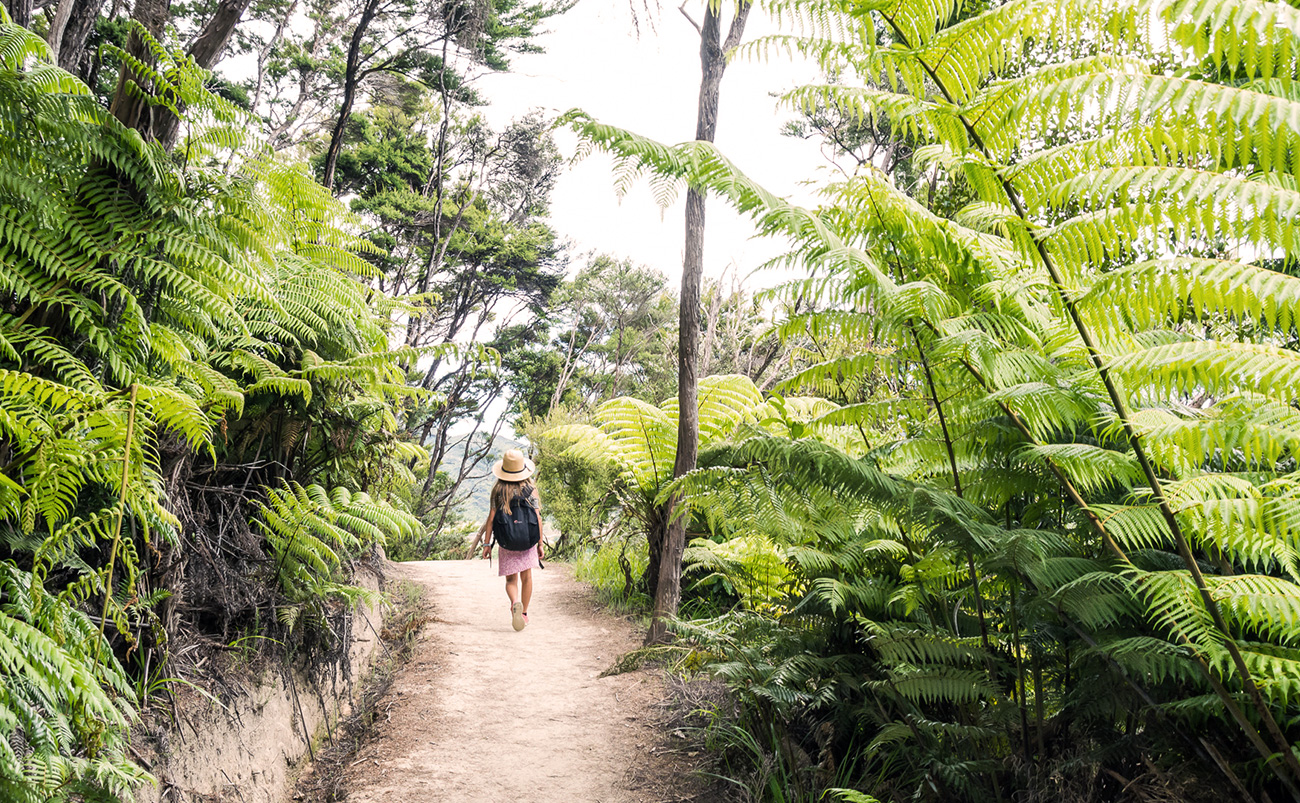
Best Time to Visit
Summer (Dec-Feb)
The busiest time to visit the park. You can expect to meet many people walking the Coast Track. It’s advisable to book huts and campsites in advance. The sea’s just right for boating, water-skiing, swimming and snorkelling.
Autumn (Mar-May)
Crisp, clear days make this an excellent time of the year for walking and kayaking adventures. There’s usually room in huts and campsites and rain is unlikely to cause problems. Easter is a popular time for New Zealanders to visit the park so book huts and campsites in advance.
Winter (Jun-Aug)
In winter, the park gets an average of ten rain days each month – so there’s a good chance the weather will be kind. Enjoy the Coast Track at the calmest time of the year, but equip yourself with plenty of warm clothing. Winter is an excellent time for walking and kayaking.
Spring (Sep-Nov)
Enjoy the beginning of the warmer weather, but remember to pack your rain gear. There’s usually plenty of room in huts and campsites. Native birds in the forest are singing their hearts out.
